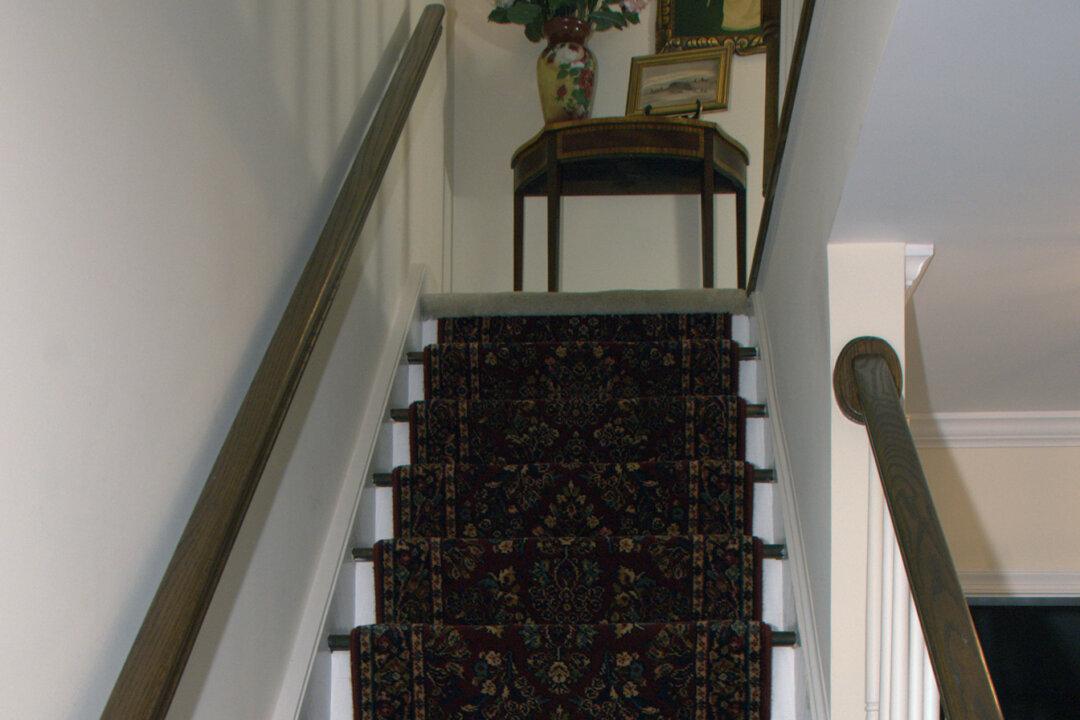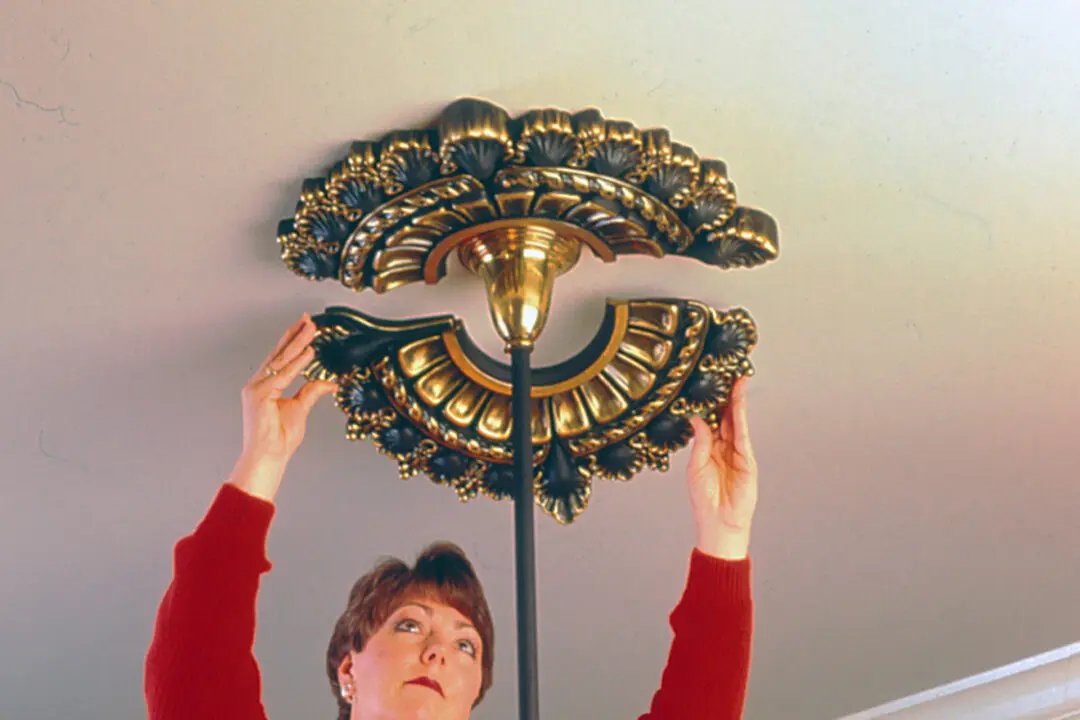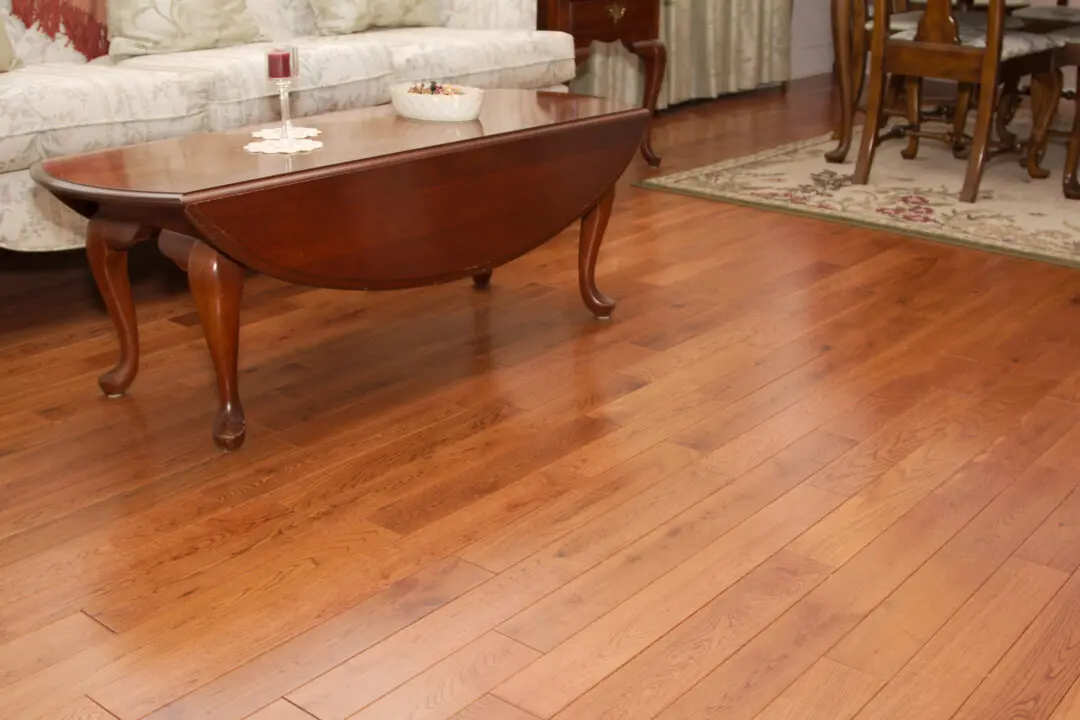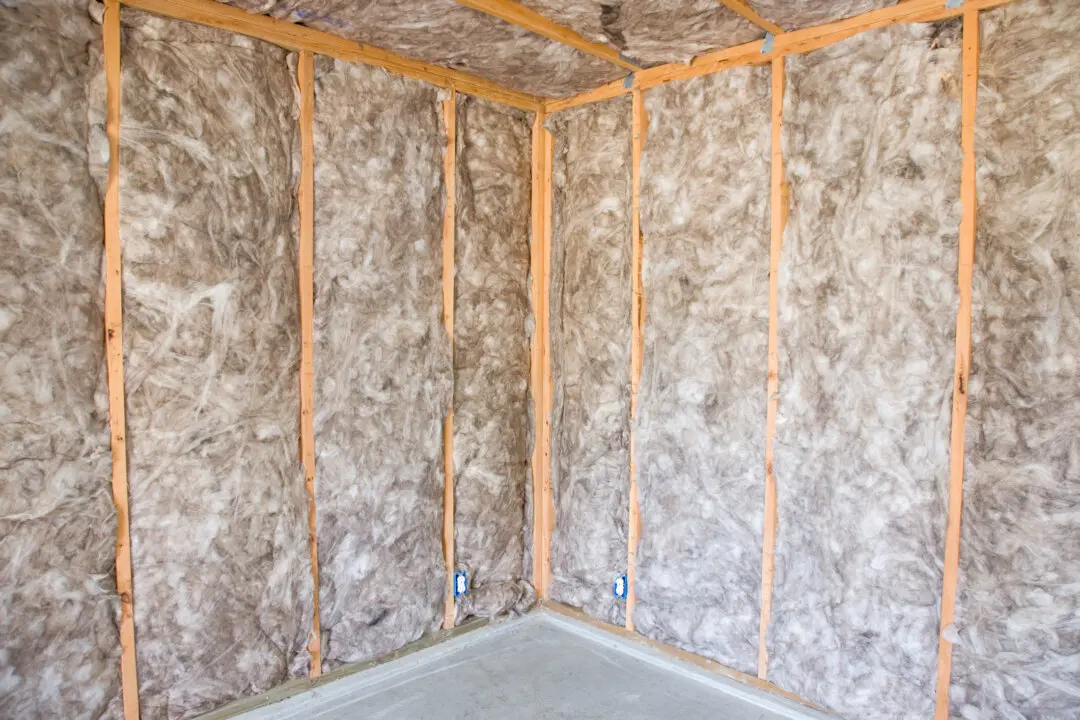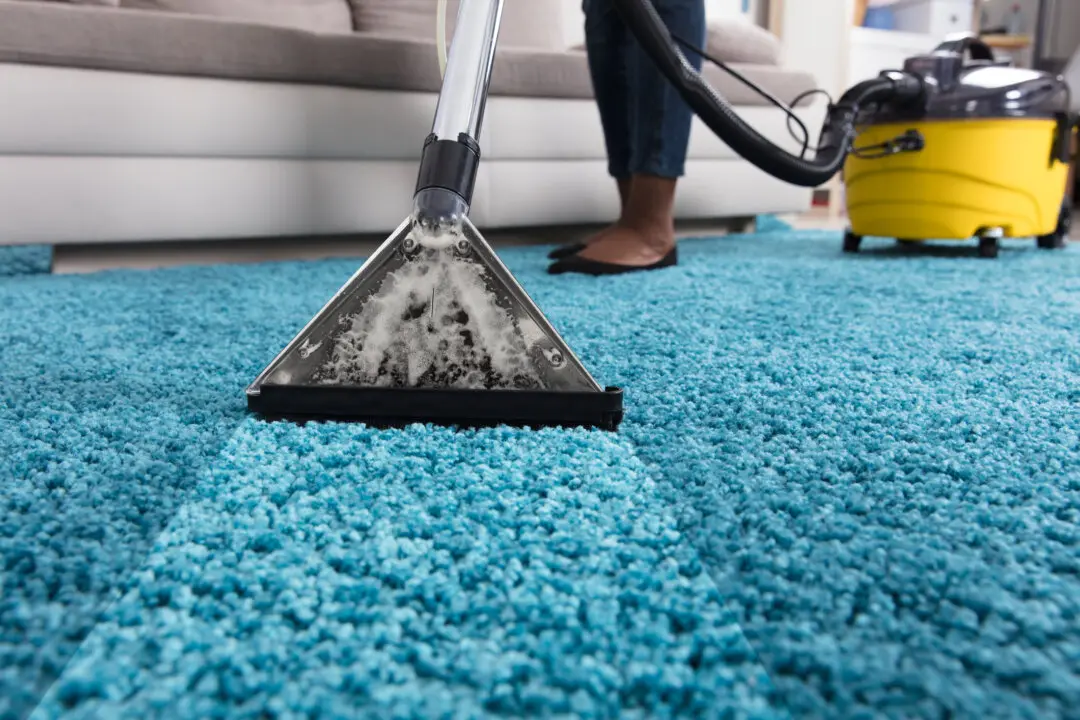To create a finished staircase and prevent the noisy clatter of footsteps up and down the stairs, a carpet runner is the solution. The carpeting adds warmth and comfort to your steps, and it is designed and sized to fit on a stairway.
You’ll find stair runners at carpeting retailers and home improvement centers in a nice selection of colors, designs and styles sold by the foot in widths of 26 and 31 inches. If you’re shopping at a retailer bring a tape measurer to confirm the width of a runner. Have on hand the number of steps, the depth of the stair tread and the height of the riser to calculate the length of carpeting and padding you need. The runner and padding are fastened to a staircase with tackless carpet strips secured on the stair and riser using a knee kicker that tucks the material in place.

